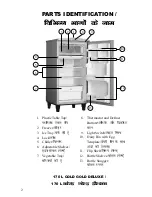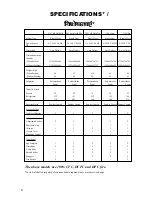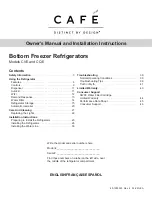
10
●
Defrosting reduces running time and therefore power consumption. It
cools the refrigerator faster and reduces condensation of moisture on
the internal walls and components. Excess frost acts as an insulator
and restricts the cooling effect.
●
To defrost, just push the thermostat button and the refrigerator will
defrost itself. The refrigerator then switches on again automatically
once the defrosting process ends.
●
Defrosting should be carried out at least once a week. Hot, humid
climates will result in quick frost formation necessitating more
frequent defrosting. The frost formation should not exceed 6 mm
(1/4”). If defrosting is delayed, the water evaporation pan will
evaporate less defrost water and water may come onto the floor.
●
It is advisable to clean your refrigerator once a month by first
switching it off and disconnecting the plug from the mains supply.
●
Use mild soap solution for wiping the refrigerator gently. Do not let
the water get into the light bulb-holding box and other electrical
components.
●
To clean the exteriors, wipe with a cloth moistened with warm, soapy
water. Wipe dry. Never use solvents, acids, baking soda solution or
abrasive powder to clean the refrigerator. They may damage the
surface.
●
Cockroaches and insects can only creep into your refrigerator through
the door. So remember to shut your door firmly every time and see to
that the gasket is kept in good shape. Also ensure that the
surroundings are kept free from insects and rodents.
DEFROSTING AND CLEANING






































